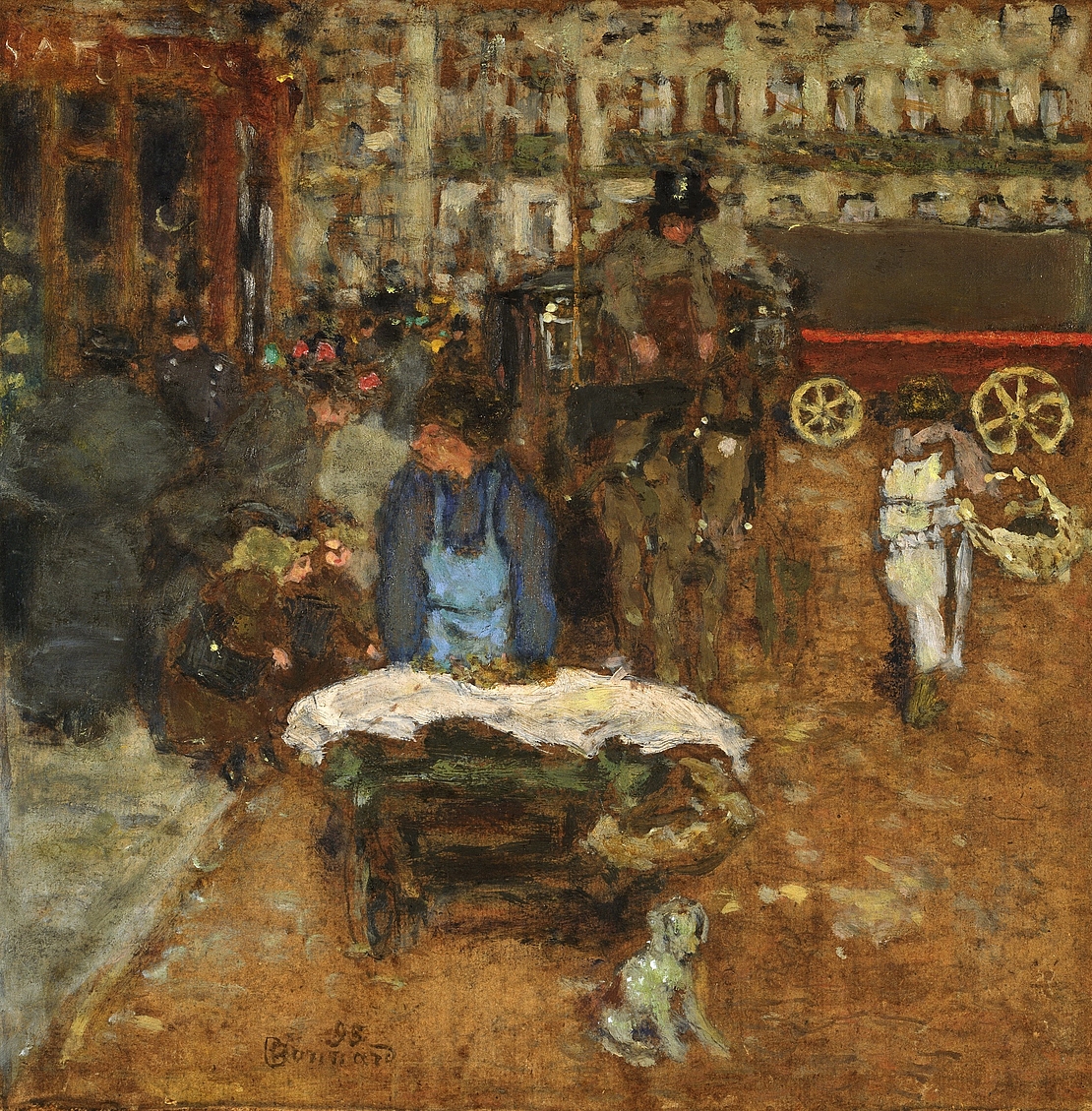
This small-format view of a Paris street scene looks like a photographic snapshot, of the sort that is taken a million times over on mobile phones today to be posted on the Internet. A snapshot whose charm derives from the seeming randomness of the coming-together of various agents. A market woman with a handcart in the foreground, a coach and team behind; to the left, on the wide pavement in front of a business or bistro, an undefined mass of passersby. Two small, old ladies are plainly in the act of crossing the boulevard. A building façade with a carriage placed in front of it marks out a stable background horizontally, parallel with the picture’s plane. Even when seen close to, one can barely disentangle this mass of people, carriages, and animals. Bonnard dissolves the events into soft patches of intermingling color. In particular, the red, green, and yellow accents located further back and to the left lend the scene an ornamental, mysteriously glimmering atmosphere. The mood of the passersby streaming along the boulevard is uncertain: a nervous throng, or just relaxed strollers?
The street scene provides Bonnard with an external pretext for exploring the merging and blurring of motifs in order to liberate color from its traditional role in the representation of objects. The emphasis is not on a realistic depiction; on the contrary, it is on the dissolution of persons and objects and their constant changeability through colors, which have a life of their own. While various green and brown tones predominate — and these relate to the realism style of the mid-nineteenth century — the striking soft focus of the passersby and animals, carriages and buildings results in an unresolved state of change. They appear to move in the tumbling, dancing manner of a flock of butterflies. The figures have abandoned their clear outlines to melt into patches of color; this allows them a curious liberty to live a life of their own. This melting — of solid forms and of the conventions of academic representation alike — is a key concept in understanding Bonnard’s art. This small-format painting offers a prime example of it. Additionally, his paintings are characterized by a mysterious fleeting quality; however, they appear so only at first glance. More precise examination makes it plain that this is in fact where their characteristic daydream-like autonomous life of persons of landscapes has its roots. The proportions shift; as they do so, they open up unexpected windows on a paradoxical simultaneity of absent representational precision and a remarkably present inner intensity of soul.
Markus Stegmann in: «Herzkammer», Museum Langmatt 2020